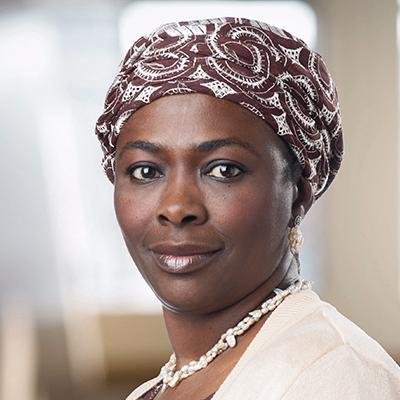Changing the education landscape for girls in Africa: Traditional leaders can shift the structure
In January, CIFF supported the first ever Keeping Girls in School conference; a convening of African traditional and religious leaders aimed at finding solutions from within their tradition and culture that will support girls’ education with, shifting attitudes, developing policies and advocating for girls’ education. Mairo Mandara, CIFF Senior Fellow, reproductive, maternal and child health expert, writes on the landscape of girls’ education in Africa, and the pathway to change.
It is undeniable that education plays a pivotal role in developing a child’s well-being. But the effects do not end with that child. The true positive impact of educating children – especially girls – is felt by the entire community. From economic development and increased employability, to enrichment of health and better social development for families, keeping girls in school leads to community-wide progress.
This positive impact of educating girls is huge. A recent World Bank report states that child mortality rates reduce by 49% if a mother is educated to secondary school level, and if all young adults completed primary education, we could expect 700,000 fewer new cases of HIV infections each year. Within a decade, that means that by ensuring all young adults complete primary school, as many as 7 million more people could live life HIV-free[1].
Though many of these statistics are known by development organisations, governments, and those in countries with high figures of uneducated girls, implementing change and enforcing girls’ education is much harder in practice.
 Very few key interventions have managed to address the root causes of the problem. Concepts for interventions themselves have been interesting and innovative, but there are few pilot interventions that yield successful results due to political priorities and the struggle to scale up certain programmes. The key to sustainable solutions in keeping girls in school lies in the communities understanding, owning and taking responsibility for not only keeping their girls in school, but also holding their leaders accountable for creating an environment that encourages keeping girls in school.
Very few key interventions have managed to address the root causes of the problem. Concepts for interventions themselves have been interesting and innovative, but there are few pilot interventions that yield successful results due to political priorities and the struggle to scale up certain programmes. The key to sustainable solutions in keeping girls in school lies in the communities understanding, owning and taking responsibility for not only keeping their girls in school, but also holding their leaders accountable for creating an environment that encourages keeping girls in school.
Those on the ground influencing change and leading society can often be traditional or religious leaders, and their involvement in the conversation is one of the most important factors in driving real, tangible change. This is not only in supporting the call for keeping girls in school, but advocating more specifically for the inclusion of life and livelihood skills and income generation activities within the school program. This results in girls leaving secondary school with skills that provide them with a social safety net and economic self-reliance; fundamental foundations to any healthy and flourishing society.
To turn this ambition into a foreseeable reality, the Sultan of Sokoto and the Kabaka of Buganda hosted the Keeping Girls in School Summit, bringing together African traditional and religious leaders from across the continent to discuss and discover lasting solutions for girls’ education. Solutions were discussed from within African cultures and values, and by influential African leaders, in attempt to bring about realistic, long-term, socially-sustainable change.

The Keeping Girls in School conference this January was the beginning of many fruitful conversations and action plans developed by the leaders towards increasing girls’ school attendance and quality of learning in their communities.
These future steps range from youth leaders committing to supporting the mentorship of girls in their communities, to traditional and religious leaders committing to building national and local networks that can share learnings and advance advocacy.
The discussions held between traditional leaders, youth groups, and women leaders are the start of a seismic shift in the way female education is openly discussed between leaders and the communities they serve. We are one step closer to achieving real change for the girls of our communities; supporting them in achieving quality education, core livelihood skills, and a secure future.
[1] World Bank, 2018, Missed Opportunities: The High Cost of Not Educating Girls, Wodon, Quetin T. et al.

Mairo Mandara, CIFF Senior Fellow
Mairo is based in Nigeria, and specialises in reproductive, maternal and child health.